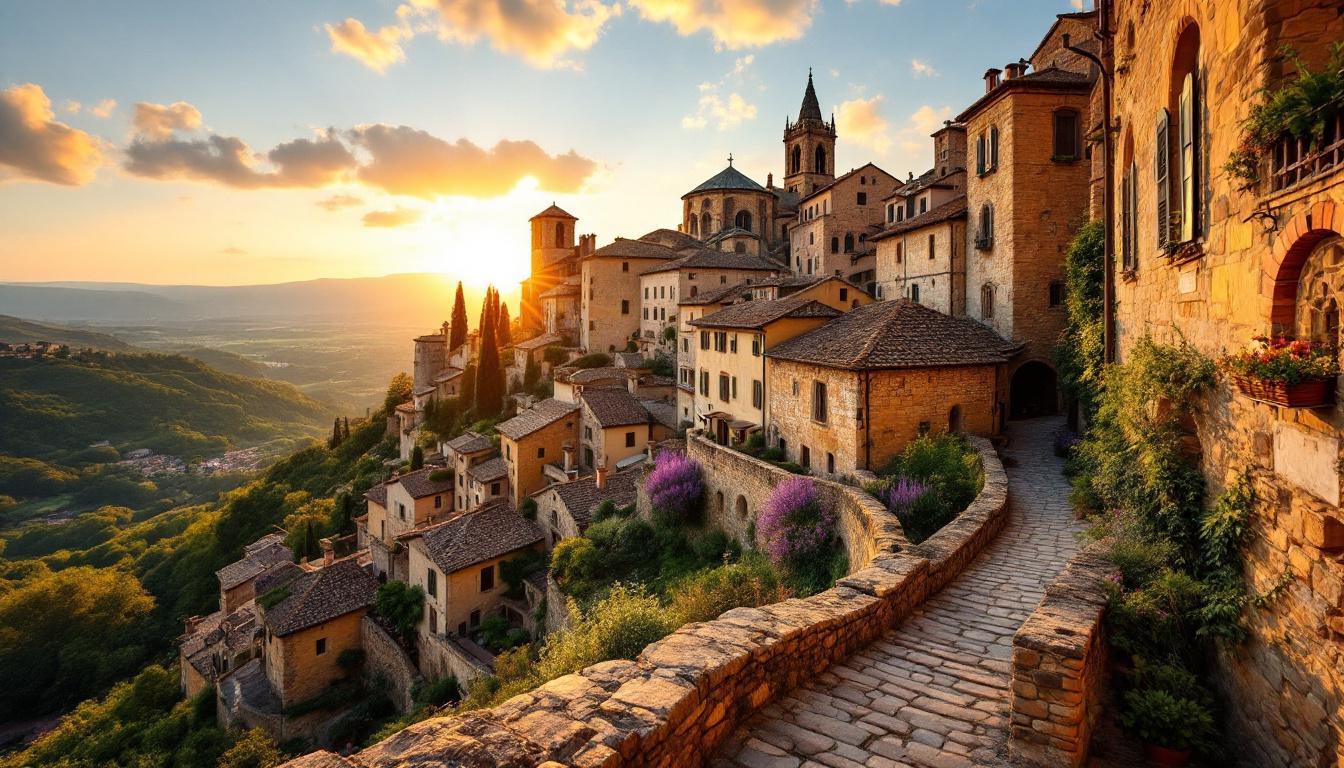Perched dramatically on a hilltop in southeastern France, Mirmande stands as one of the most captivating medieval villages you’ve likely never heard of. This stone-built wonder, home to just 592 residents, has earned its place among the prestigious “Plus Beaux Villages de France” (Most Beautiful Villages of France) for good reason – it offers a mesmerizing blend of history, art, and botanical beauty that remains delightfully untouched by mass tourism.
A medieval fortress transformed into a living masterpiece
Dating back to the 12th century, Mirmande’s ancient stone buildings and fortified walls tell stories of a bygone era. The village’s strategic hilltop location once served as a defensive stronghold, with remnants of its protective ramparts still visible today. Narrow cobblestone streets wind upward, revealing architectural treasures at every turn.
The crowning jewel is the Romanesque Church of Sainte Foy, offering breathtaking panoramic views across the Rhône Valley and Vivarais mountains that rival those of Provence’s lavender-covered landscapes.
The village that artists couldn’t resist
Unlike many abandoned medieval villages, Mirmande found new life through artistic resurrection. In the 1920s, renowned cubist painter André Lhote established a painting academy here, drawn by the exceptional quality of light and the village’s timeless character.
“Mirmande offers a rare convergence of historical architecture and natural beauty that continues to inspire creative souls today,” explains local gallery owner Marie Dufresne. “The light here changes the stone facades hourly – it’s magic for painters.”
Today, numerous artists’ studios and galleries populate the village, creating a vibrant cultural atmosphere within these ancient walls.
Botanical treasures tucked between stone walls
Beyond its historical and artistic significance, Mirmande holds another distinction as one of the “Villages Botaniques de la Drôme.” The village specializes in decorative foliage plants, with beautiful gardens tucked between medieval buildings and cascading down stone walls.
These botanical elements create striking contrasts against the golden stone architecture, especially when lavender blooms in nearby fields, adding purple splashes to the surrounding landscape.
A gastronomic stopover worth savoring
The Drôme region produces exceptional fruits, a legacy that followed the decline of the silk industry. The village itself hosts charming cafés where you can sample local specialties while soaking in views that have remained largely unchanged for centuries.
For serious food enthusiasts, the Michelin-rated restaurant La Capitelle offers refined cuisine showcasing regional ingredients in a setting that perfectly complements Mirmande’s historical ambiance.
Practical considerations for your visit
While Mirmande’s hilltop position provides those magnificent views, it also means steep climbing on uneven cobblestone streets. Comfortable shoes are essential, and visitors with mobility issues should be aware of the physical demands.
“The best way to experience Mirmande is to slow down completely,” advises local tour guide Jean Moreau. “The village reveals its secrets to those who take time to notice small details – a carved doorway, an ancient olive press, or a glimpse into a hidden garden.”
The car-free village requires parking outside the center, enhancing its peaceful atmosphere but requiring additional walking. Consider this peaceful alternative to fast-paced transportation experiences elsewhere.
Beyond the village walls
Mirmande’s location between Montélimar (famous for its nougat) and Valence makes it an ideal base for exploring the broader Drôme region. Consider ventures to other natural wonders nearby, or even a day trip to discover protected ecological treasures in the surrounding landscape.
While Provence gets the spotlight, the Drôme offers equally stunning scenery with fewer crowds – a trade secret among experienced France travelers.
As you descend from Mirmande’s heights, you’ll carry with you more than photographs. This remarkable village imprints something deeper – a connection to centuries of human history woven seamlessly with natural beauty, artistic expression, and the enduring charm of rural French life at its most authentic.
